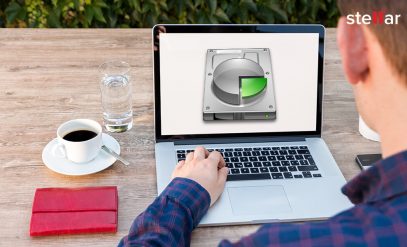Encryption is the process of coding the messages in an incomprehensible form that could only be decrypted with the help of a key.
How Does Encryption Work in the Digital World?
The new age communication channels, storage systems, and applications use encryption as the primary method to ensure data privacy. However, data encryption is complex as it involves the transmission of critical information to long distances where the data needs to transverse multiple networks.
In the digital world, encryption is used during data transmission as well as storage. When the data is not encrypted, it is called plaintext. The plaintext is encoded with advanced algorithms and a deciphering key. The encrypted text is known as ciphertext, which can’t be decoded without the key. The ciphertext is a combination of letters, numbers, and special characters.
Why is Encryption Needed?
In this day and age, data decides the success and failure of a business. With the evolution of the Internet, data can travel across countries or even continents. Data encryption ensures that if a hacker or a program breaches your data, it cannot comprehend it.
Different Levels of Encryption
There are various levels in the data’s journey from the source to its destination. From storage, transmission to end-point, encryption can be implemented at every level. Here are the different types of encryptions that can be deployed at various levels.
1. Link-level Encryption
A network comprises multiple links interconnected to facilitate data transmission. Link-level encryption (LLE) ensures data privacy by offering encryption across different links.
The data is encrypted at the source and decrypted at a particular link. The encryption takes place again at the link until it is decrypted at the next link. This ensures an added layer of protection as the data can never be decrypted even if a hacker is able to get the encryption key at the source.
2. Hardware Level Encryption
Hardware-level encryption is usually implemented in storage devices, such as external drives. It is known as FDE (Full-Disk Encryption). After encryption, the data can only be decrypted with proper authentication methods.
Once the storage device is encrypted, the data is automatically encrypted when it is written on it and decrypted when the user authenticates himself and reads the data. Even if your storage device gets stolen, the thief can’t read the data without authentication.
3. Field-level Encryption
A webpage contains different fields, such as text, button, payment options, etc. Field-level encryption is applied to the fields of a webpage. For instance, if you want to encrypt information, such as credit card numbers, financial data, etc., you can apply field-level encryption to these fields.
Field-level encryption allows you to upload critical data on the web servers without any security issues. Only the applications that need to read the data are provided with the decryption key.
4. End-to-End Encryption
End-to-End Encryption (E2EE) offers a secure transmission channel from the source to the destination. E2EE uses public keys for encryption. No application, network, and Internet Service Provider (ISP) can get access to the data without the key.
5. Column-level Encryption
Column-level encryption is implemented in databases, where each column is encrypted with a unique key. You have to enter a separate password to access the data in each column. This is the most micro level of encryption. Other types of encryptions include cell-level encryption, row-level encryption, etc.
Wrapping Up
Encryption is a process that converts the data into incomprehensible form with coding algorithms. It can only be decrypted with the help of a key that is given to the end-user. Encryption can be deployed at the time of storage, transmission, and even at file/folder levels. Encryption offers complete data security in the age of data breaches.
However, if you’re planning to sell or dispose of your old device containing encrypted data, then you need to be sure that the encrypted data cannot be recovered and decrypted. So, to avoid such risks, you can use certified drive eraser software, like BitRaser. The software erases all the encrypted data from the device, beyond the scope of recovery.







